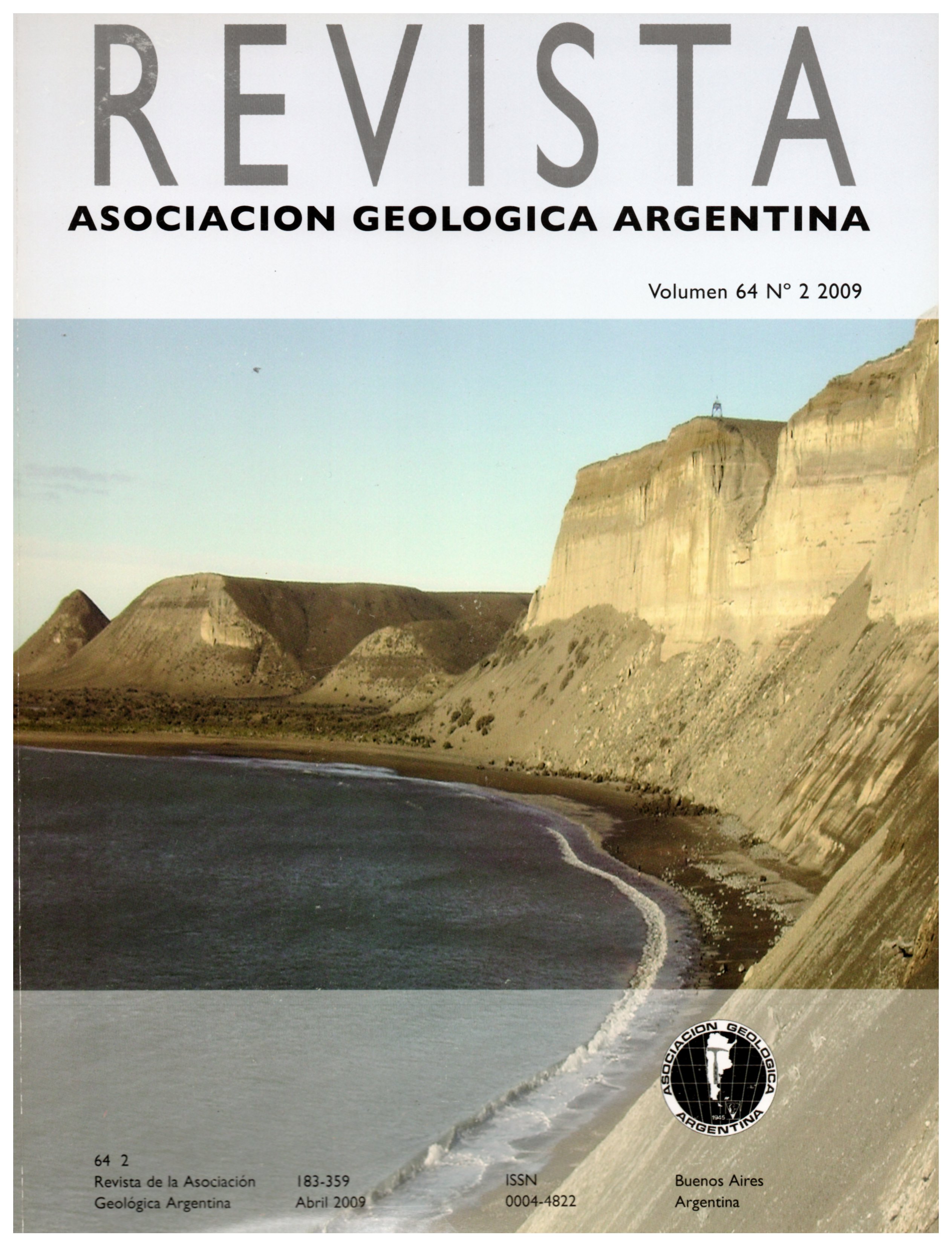The Fe Skarn of Vegas Peladas: Geologic and mineralogic characteristics and distribution of the mineral paragenesis
Main Article Content
Abstract
The Vegas Peladas iron prospect (Cordillera Principal, SW de Mendoza) is hosted in Jurassic marine sedimentary siliciclastic (Puchenque Formation), calcareous (Calabozo Formation) and evaporitic (Auquilco Formation) rocks affected by Neogene magmatism (15.19 ± 0.24 Ma, Rb-Sr whole rock) and tectonism. Four intrusive events are associated with hydrothermal alteration and mineralization. Two of them produced metasomatic Fe skarn. The most important and oldest alteration event is an Fe skarn associated with a diorite pluton that contains an aureole of hornfels and marble and a zoned prograde skarn with an oxidized mineralogy rich in garnet (And31-100Py0,34-0Grs68-0) and subordinate clinopyroxene (Di24-70Jo4,1-0,7Hd72-29,3). The diorite has an incipient and selective alteration (actinolite ± chlorite ± calcite ± titanite ± orthoclase ± epidote ± pyrite (magnetite)) and its margins are replaced by massive and irregular orthoclase + quartz alteration. Retrograde assemblages replace early alteration and are rich in epidote and amphibole. The mineralization consists of magnetite (83 to 88% FeOtotal) in the diorite and in the inner exoskarn zone, and hematite-mushketovite (93.5 to 95% FeOtotal) in the intermediate and outer exoskarn zones. Iron oxides are in equilibrium with retrograde minerals. The second metasomatic event is associated with granite emplacement. It formed a zoned skarn rich in scapolite (Me25-36), garnet (And10-81Py0,72-0Gr89-19) and pyroxene (Di42-93Jo2,6-1,7Hd54,8-5,1) overprinted by retrograde alteration and scarce iron mineralization, probably remobilized from the earlier skarn. The composition and distribution of the mineral assemblages in the Vegas Peladas district can be useful guides for Fe skarns exploration in other regions of SW Mendoza.
Article Details

This work is licensed under a Creative Commons Attribution-NonCommercial 4.0 International License.
Nota de copyright
Los autores conservan los derechos de autor y garantizan a la revista el derecho de ser la primera publicación del trabajo licenciado según una licencia de atribución Creative Commons que permite a otros compartir el trabajo con el reconocimiento de la autoría y de la publicación en la que se publicó por primera vez.
Declaración de privacidad
Los nombres y direcciones de correo electrónico introducidos en esta revista se usarán exclusivamente para los fines declarados por esta revista y no estarán disponibles para ningún otro propósito u otra persona.

